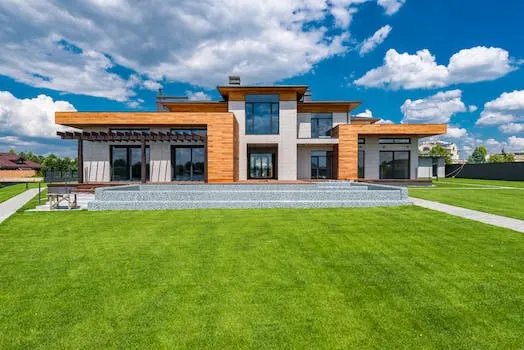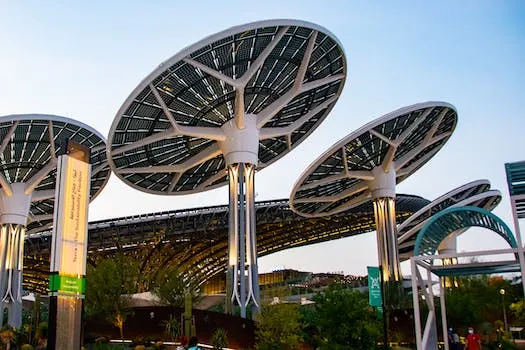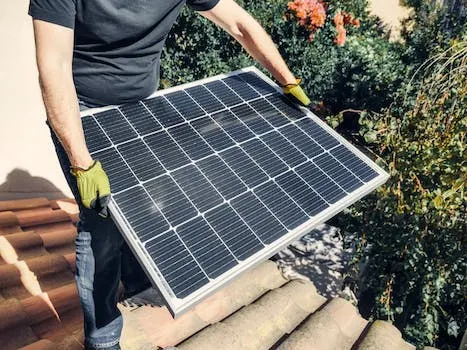
Going Green With Zero Carbon Housing
What is Zero Carbon Housing?
Zero carbon housing is a term used to describe buildings that are designed to produce no more carbon dioxide (CO2) than they consume on an annual basis. This is achieved through the use of renewable energy sources and energy-efficient building design and materials, making them more environmentally friendly than traditional buildings that rely on fossil fuels for energy. The built environment generates 40% of global CO2 emissions, with building operations responsible for 27%. A zero carbon home emits no net carbon dioxide during its operation, while a carbon positive home produces more renewable energy than it uses. To achieve this, the total amount of energy used by the building must be equal to the amount of renewable energy produced on-site or off-site. Building professionals can construct and renovate houses and other buildings to be high performance, green, renewable ready and net zero in terms of their overall consumption. The Net Zero Carbon Buildings Commitment was developed to recognise advanced climate leadership action from businesses, organisations and other stakeholders in order to reduce emissions from new construction projects.
What Are the Benefits of Zero Carbon Housing?
zero carbon housing offers a variety of benefits that can help reduce your carbon footprint, save money on energy bills, and improve air quality. By reducing energy consumption and relying on renewable energy sources, you can significantly reduce your carbon emissions and overall carbon footprint. This type of housing is designed to be both comfortable and energy-efficient so you don't have to sacrifice one for the other. Additionally, using renewable energy sources helps to improve air quality in your area.
The effects of climate change are becoming increasingly apparent, making it more important than ever to take steps towards reducing our environmental impact. Zero-carbon buildings are an effective way to do this by curbing fossil fuel combustion which worsens air quality, especially for children and the elderly. These buildings take advantage of available technology that reduces emissions while increasing health equity as well as improving public health overall.
Reducing your own personal environmental impact can lead not only to a cleaner community but also a happier life for yourself as well! To do this effectively with zero-carbon housing requires taking advantage of cost-effective technology such as solar panels or wind turbines which generate clean electricity without producing any emissions or pollutants into the atmosphere. Additionally, these homes are designed with insulation materials that keep heat in during winter months while keeping cool air in during summer months - meaning less reliance on heating or cooling systems which use up more electricity than necessary!
The City is currently working towards implementing over 130 actions that will reduce greenhouse gas emissions from transportation, waste management and other areas - all part of their goal towards achieving zero net carbon emission by 2050! By investing in zero-carbon housing now you can contribute towards this goal while also saving money on your energy bills in the long run - making it an investment worth considering if you're looking for ways to go green!
How Can You Make Your Home Zero Carbon?
Making your home zero carbon is easier than you may think. From do-it-yourself hacks to building changes, there are a variety of ways to reduce your carbon footprint and make your home more eco-friendly. Improving your home's energy efficiency, through better insulation for instance, or replacing your oil or gas furnace with an electric heat pump can reduce your energy consumption and help you save money on utility costs. Installing energy-efficient appliances such as LED bulbs can also help you save energy and money. Investing in renewable energy sources such as solar panels or wind turbines can further reduce emissions from the home. Additionally, simple things like turning off lights when leaving a room and unplugging appliances when not in use can help conserve energy. Finally, consider offsetting any remaining emissions by investing in projects that reduce greenhouse gases elsewhere; for example, paying for one ton of carbon offsets will have the same effect as reducing one ton of emissions from the atmosphere. With these steps taken together, it is possible to make any home zero carbon without needing a complete overhaul!
Conclusion
Going green with zero carbon housing is an excellent way to reduce your carbon footprint while still living comfortably. Investing in energy-efficient appliances, renewable energy sources, and energy-saving habits can help you make your home zero carbon and improve the environment. Taking these steps can save you money on utility bills, reduce your emissions, and provide a comfortable living space. Additionally, investing in insulation for your home can help to reduce electricity usage and save money on heating costs. Furthermore, making a zero energy or carbon positive home requires reducing energy demands through passive design as well as smart purchases of systems and appliances that are labeled with Energy Star ratings. By taking these steps towards going green with zero carbon housing, you will be able to live comfortably while helping the environment at the same time.







